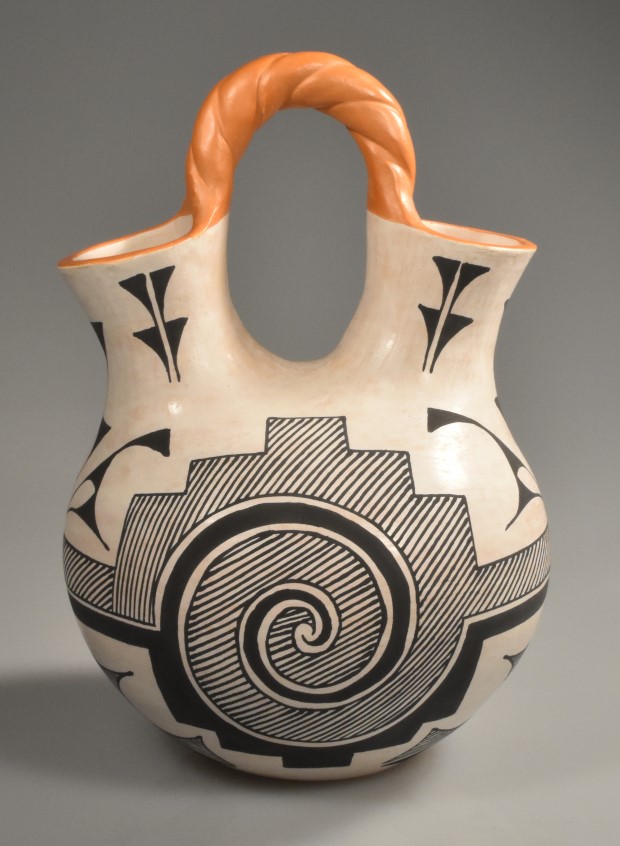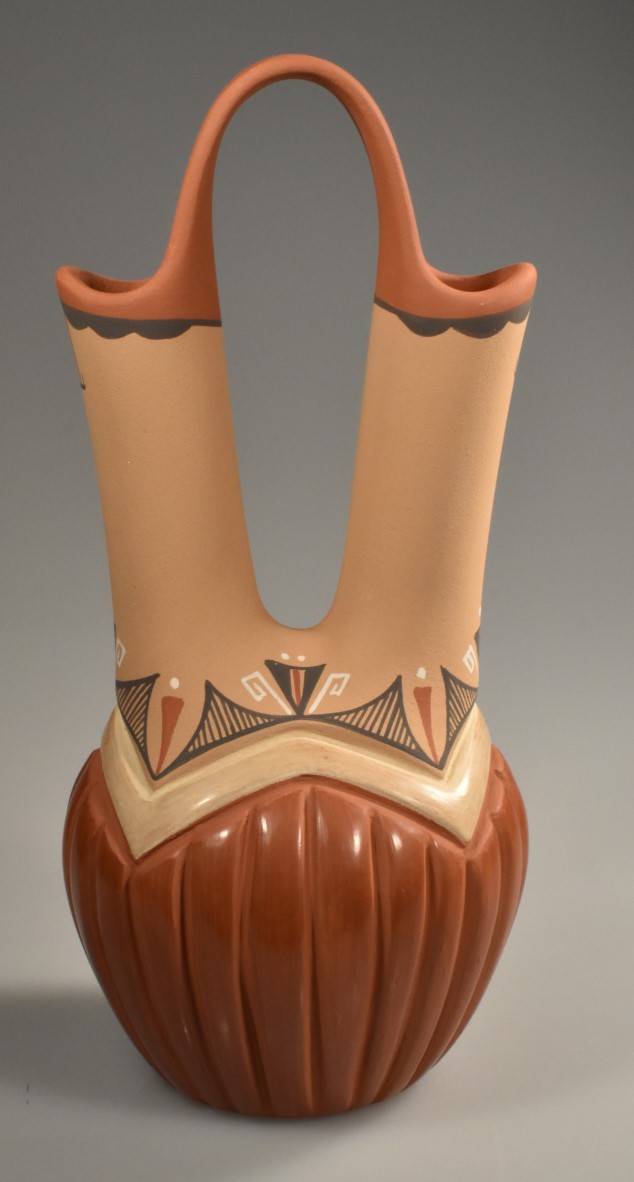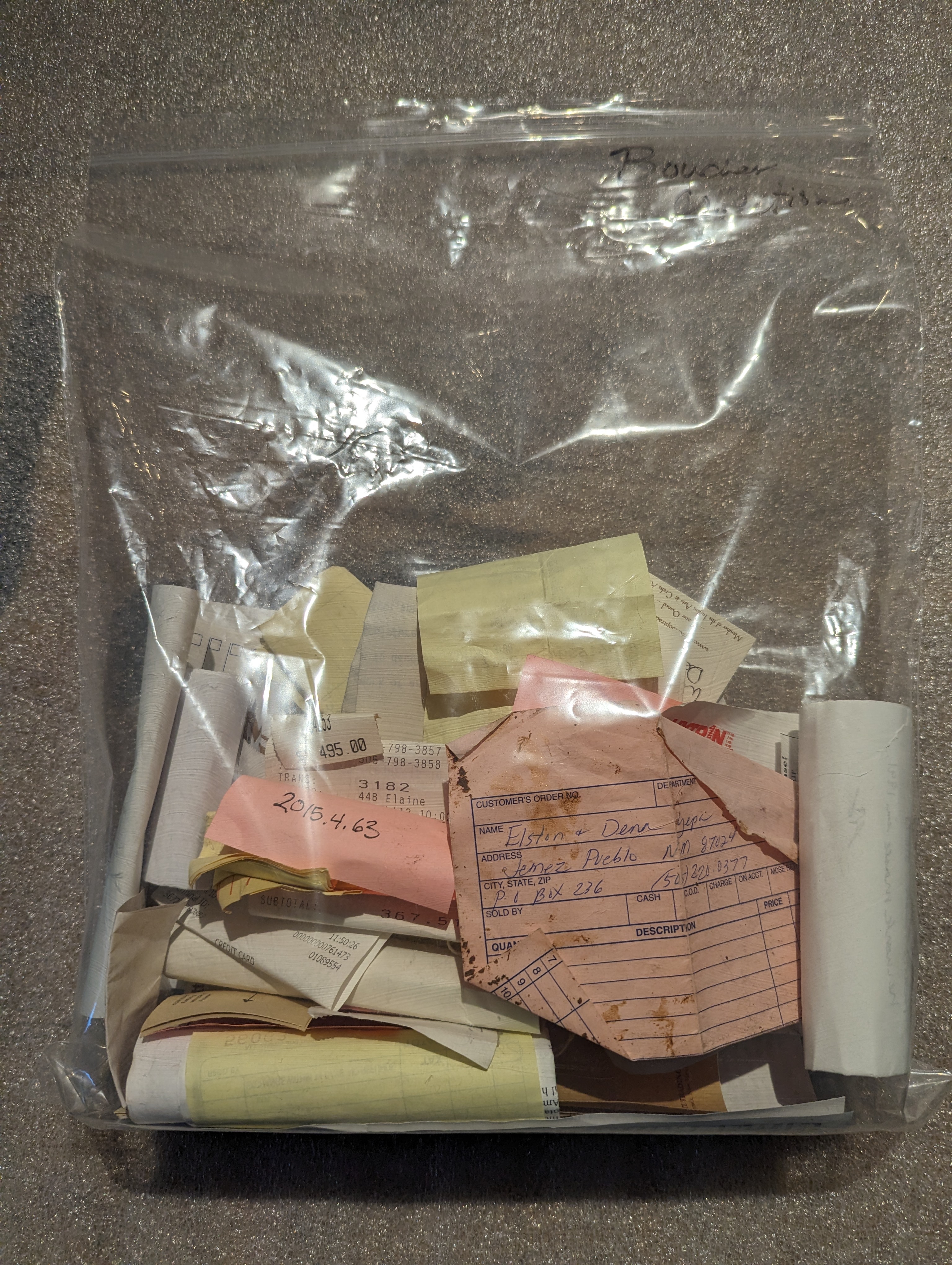Boucher Collection
The Boucher Collection was a donation by Larry Boucher in 2015. The collection consists of over 400 pieces of Native American pottery. Every Pueblo in New Mexico, from Isleta to Taos, is represented in the collection. The collection also includes examples of Diné (Navajo) vessels as well as pieces made by artists from other Native North American cultures. A majority of the objects in the collection are wedding vessels. These vessels have dual-spouts that are joined by a handle. The form represents the joining of two lives in marriage.
Unfortunately, Boucher collection documentation is disorganized. Paper object records are missing from the filing cabinets and the donor file was missing. Craig found the Boucher donor file in the Director’s office and returned it to the filing cabinets in KH 210. Craig later found additional stack of Boucher related documents in the Conference Room, KH 208. These documents included a class paper by Cover as well as two copies of appraisals regarding objects in the Boucher Collection. The documents were disorganized and out of order. On 2024-04-11, Craig tasked Dolores Melchor to organize the two sets of appraisal documentation in numerical order.
On top of the filing cabinets in KH 208, Craig also found a bag of receipts related to the Boucher Collection (Figure 1). These receipts had UM object identification numbers written on them. Craig requested the Dolores organize these receipts in numerical order based on the object identification. The aim is to correlate receipt information with appraisal documentation and ensure both of these lines of evidence are included in the UM’s collection inventory in PastPerfect. These receipts will be filed with the paper object records.
Many of the Boucher Collection records in PastPerfect seem to lack details that are included in the appraisal documentation. Additionally, depending on who created the record, appraisal information was logged in different fields. Having the same pieces of information stored in different fields complicates data retrieval. To mitigate this, Craig’s plan is to attempt to correlate the appraisal information with the UM object identification numbers, ensure that appraisal information is logged into appraisal fields (rather than notes and legal), and generally work to ensure that data in PastPerfect is complete and up to date. As of 2024-04-16, Melchor was working on organizing the receipts and updating PastPerfect records with complete appraisal information properly logged into appraisal fields.


